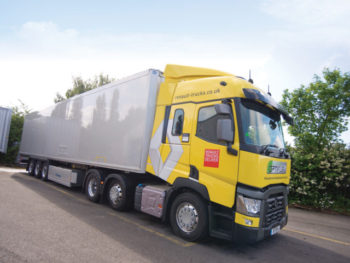Maintaining a Driver CPC can be seen as an onerous chore, or an opportunity, says Dan Gilkes.

If you require staff to drive a truck for hire or reward, even a 7.5-tonne truck, they will not only need the required driving licence, but will also have to have an up-to-date Driver CPC. The Driver Certificate of Competence is a legal requirement for any truck driver, one that requires 35 hours of periodic training every five years to maintain.
That 35 hours must be taken in five seven-hour blocks, though how you break that down is up to you. You can opt to do one day per year, or leave it until the fifth year and do all 35 hours in one hit.
While this may sound like a time-consuming bit of red tape, taking drivers away from work for a day each year, companies can use Driver CPC training as an opportunity to refresh expertise or to learn new skills.
Only approved Driver CPC courses count towards the driver’s 35 hours, however the choice of course content is huge. This ranges from actual driving, for economy or safety purposes, through to loading and unloading; health, safety and emergencies; physical and mental health; prevention of criminality and trafficking; to regulation and company issues.
You can even use the DCPC course to spread good practice within the company fleet. I recently took a two-day Opti-drive CPC course, with Renault Trucks. Designed to help drivers to get the best from Renault’s T-range of heavy haulage trucks, it also serves as a train-the-trainer course, providing the opportunity to trickle down fuel-efficient driving techniques throughout a company’s drivers.
The training, for up to four delegates, takes place in the classroom initially, with the first morning spent going through the controls and driver options of the T-range Renault truck. The delegates then do a walk-around of the truck, taking in daily check points and pre-drive safety checks.
Then it is into the cab, where the bunk has been removed and three additional seats installed to allow five to travel safely. Drivers take turns at the wheel, putting what they have been taught, into practice on the road. The second day takes a similar format, but with less time in the classroom and more on the road.
Rather than simply trucking up and down motorways, the on-road section includes the trickiest Cotswold terrain that trainer Clive Bond can find. This is designed to make the driver use the various features on offer, to achieve the most economically efficient drive.
The Optidriver automated gearbox has 12 forward speeds and it’s true that you can simply put it in D and let the electronics take care of things. However, there are a number of ways in which the driver can influence the transmission, through the use of driver modes, multi-setting adaptive cruise control, soft cruise resume, Optiroll transmission disconnect and Optivision, which uses GPS and topographical data to ‘learn’ regular routes and select and hold gears accordingly.
There is certainly plenty to learn, but the results can save a company a lot of money, particularly if spread across a fleet of vehicles.
Driver CPC qualifications are a mandatory requirement for truck drivers across Europe. Maintaining your training hours however need not be simply a box ticking exercise. Taking a closer look at the training on offer, and tailoring it to suit your operation, can be a money-saving exercise.

